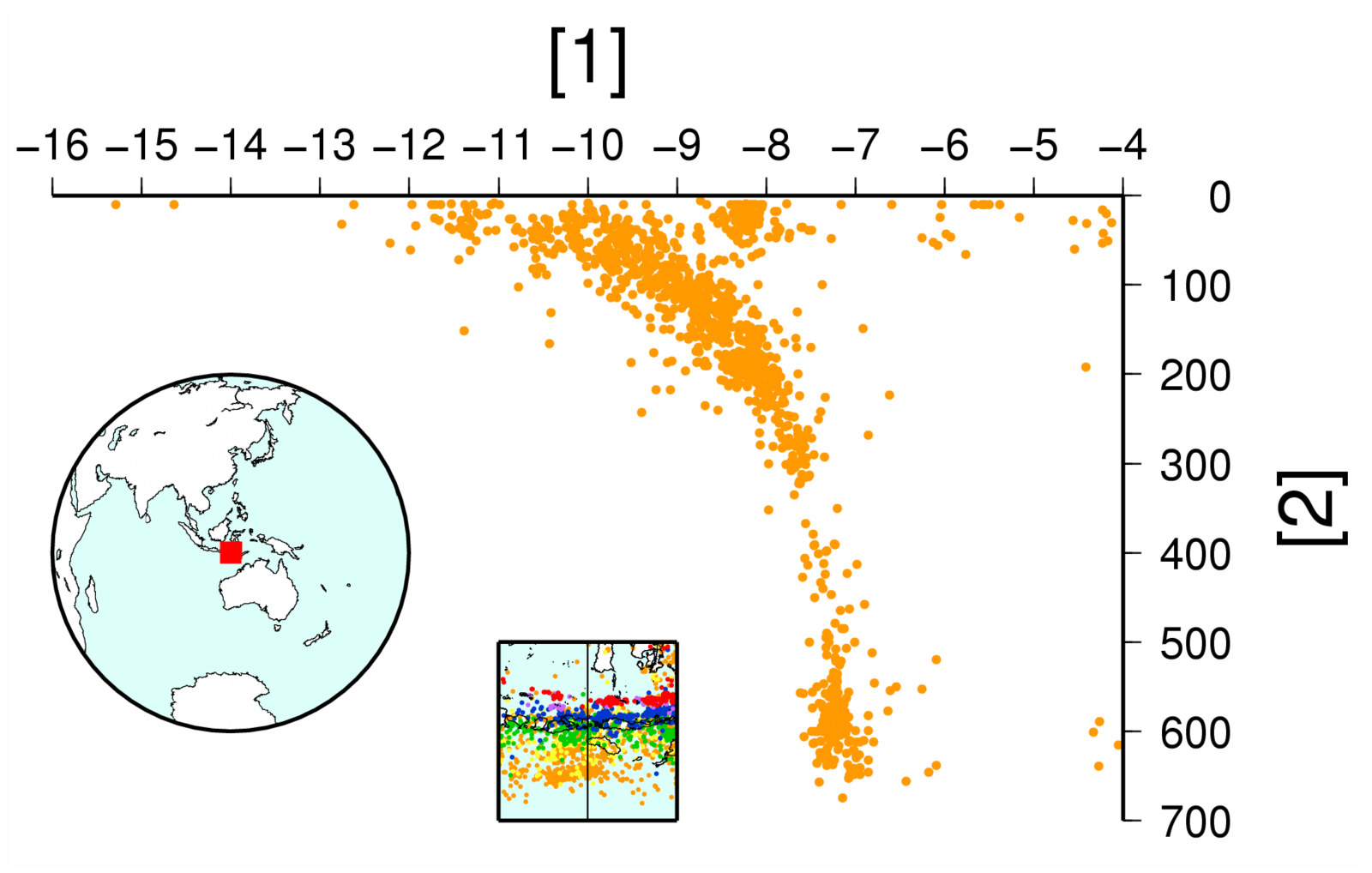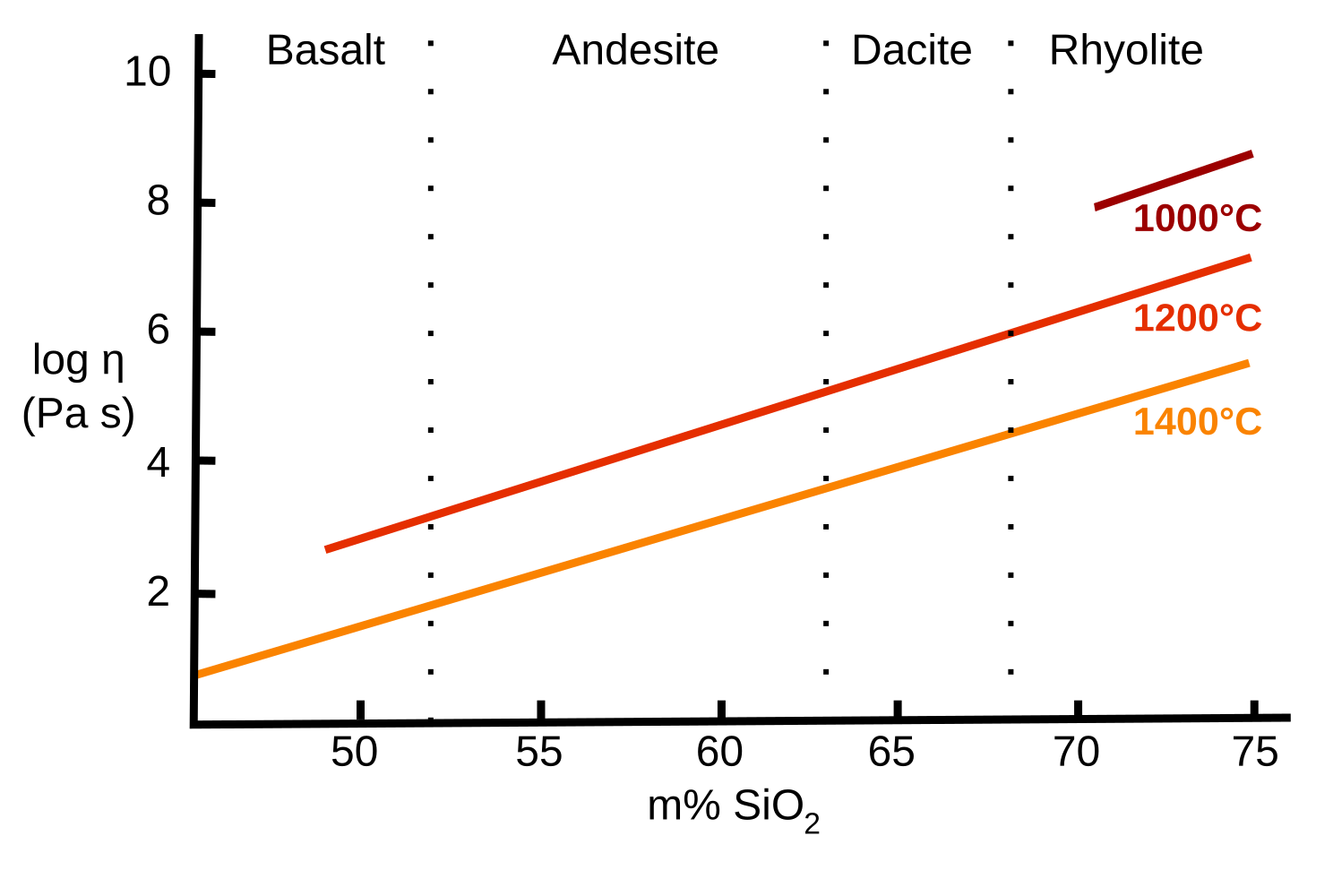Edexcel Specification focus:
‘How physical processes affect the magnitude and type of volcanic eruptions, and the magnitude and focal depth of earthquakes (Benioff zone).’
Understanding the physical processes that determine eruption type and earthquake magnitude is essential in assessing tectonic hazard severity and risk across different plate boundaries.
Earthquake Magnitude and Focal Depth
Measuring Earthquake Magnitude
The magnitude of an earthquake refers to the amount of energy released at the earthquake’s focus. This is usually measured using the Moment Magnitude Scale (MMS), which provides a more accurate measure than the older Richter scale, especially for large earthquakes.
Focal Depth and Its Importance
The focal depth is the depth at which an earthquake originates beneath the Earth’s surface. Earthquakes are categorised by depth:
Shallow-focus (0–70 km): Most destructive due to proximity to the surface. Common at divergent and transform boundaries.
Intermediate-focus (70–300 km): Occur in subduction zones.
Deep-focus (300–700 km): Exclusively found in subduction zones.
Benioff Zone: A dipping zone of earthquake activity that begins at an oceanic trench and follows the subducting plate down into the mantle, marking the path of the subduction process.
In the Benioff zone, friction between the descending slab and surrounding mantle causes earthquake activity at various depths.

This diagram shows the distribution of earthquake hypocentres along the dipping subducting slab (Wadati–Benioff zone), highlighting foci from near-surface down to ~670 km; it clearly distinguishes shallow, intermediate, and deep seismicity. Source
Factors Controlling Earthquake Magnitude
Several physical processes influence the strength of an earthquake:
Amount of strain energy released: Greater stress accumulation along a fault results in a larger magnitude when it is finally released.
Type of fault: Strike-slip faults (e.g. San Andreas) often produce shallow but intense earthquakes. Thrust faults at subduction zones can trigger mega-thrust events.
Rock rigidity and lithospheric structure: Stronger, colder rocks store more elastic energy.
Depth of focus: Shallow-focus earthquakes tend to cause greater surface shaking and damage.
Volcanic Eruption Magnitude and Type
Volcanic eruptions vary significantly depending on magma characteristics and tectonic setting. The Volcanic Explosivity Index (VEI) measures the magnitude of eruptions by considering plume height, volume of material ejected, and qualitative observations.
Magma Composition and Viscosity
Magma viscosity plays a major role in eruption style.

This graph plots the logarithm of magma viscosity (η) against silica content (% SiO₂) for various temperatures, showing low-silica basalts are fluid while high-silica rhyolites are highly viscous. Source
Viscosity: A measure of a fluid’s resistance to flow; in magma, it is controlled primarily by silica content and temperature.
Basaltic magma (low silica, high temperature): Low viscosity, allowing gases to escape. Leads to effusive eruptions with lava flows (e.g. Iceland).
Andesitic magma (moderate silica): Higher viscosity, traps gases, leading to explosive eruptions.
Rhyolitic magma (high silica, lower temperature): Very high viscosity, gas-rich, causing highly explosive eruptions (e.g. Mount Pinatubo).
Gas Content and Pressure
The more gas present in magma, the more explosive the eruption. As magma rises, pressure decreases, and gases expand. If magma is viscous, gas remains trapped, increasing pressure until a violent release occurs.
Plate Margin Processes
The tectonic setting largely determines the eruption style:
Constructive (divergent) margins:
Found at mid-ocean ridges or continental rifts.
Basaltic magma.
Frequent, low-explosivity eruptions.
Destructive (convergent) margins:
Oceanic plate subducts beneath continental or oceanic crust.
Water from the subducting slab lowers the melting point of mantle rocks, generating andesitic or rhyolitic magma.
Highly explosive eruptions common.
Hotspots (not at plate boundaries):
Magma originates from deep mantle plumes.
Can produce either effusive (e.g. Hawaii) or explosive (e.g. Yellowstone) eruptions depending on magma composition.
Factors Influencing Volcanic Eruption Type
Several interlinked factors affect whether an eruption will be explosive or effusive:
Silica content:
High silica = higher viscosity = more explosive.
Temperature of magma:
Higher temperature = lower viscosity.
Water content and gas pressure:
More volatiles (e.g. H₂O, CO₂, SO₂) increase explosive potential.
Magma supply rate:
Higher supply rates can build pressure rapidly, promoting explosive eruptions.
Tectonic environment:
Influences magma composition and eruption dynamics.
The Relationship Between Earthquakes and Volcanoes
Although earthquakes and volcanic eruptions are distinct phenomena, they are often interrelated, particularly in subduction zones:
Volcanic tremors can precede eruptions as magma moves upward and fractures rock.
Large tectonic earthquakes can alter local stress fields, potentially triggering volcanic activity.
Summary of Key Influencing Factors
Earthquake Magnitude is influenced by:
Stress and strain accumulation
Fault type and movement
Rock strength and rigidity
Focal depth (Benioff zone relevance)
Volcanic Eruption Type and Magnitude is determined by:
Magma viscosity (linked to silica content and temperature)
Gas content and pressure build-up
Plate boundary setting (divergent, convergent, hotspot)
Magma volume and ascent rate
These physical processes work together to determine the scale, intensity, and impact of tectonic events, forming the basis for hazard assessment and mitigation strategies.
FAQ
While silica content is the primary control on magma viscosity, temperature has a significant secondary role.
Hotter magma is less viscous because heat reduces the internal friction between particles. This means that even silica-rich magma can be slightly less viscous at higher temperatures, though it will still remain thick compared to basaltic magma.
Temperature also affects how easily gases can escape from the magma. In hotter, low-viscosity magma, gases escape more freely, leading to less explosive eruptions.
Deep-focus earthquakes originate far beneath the Earth’s surface, often over 300 km down, usually in subduction zones.
By the time seismic waves from these quakes reach the surface, much of their energy has been absorbed or dispersed, reducing shaking intensity.
In contrast, shallow-focus earthquakes release energy closer to the surface, meaning there is less time and distance for energy to dissipate, leading to stronger ground shaking and more surface damage.
In viscous magma, especially andesitic and rhyolitic types, gas cannot escape easily due to the magma’s thick consistency.
As magma rises toward the surface, pressure decreases, causing dissolved gases (like water vapour, CO₂, and SO₂) to form bubbles.
If the magma is too viscous for the bubbles to escape, pressure builds within the magma chamber. Eventually, this overcomes the strength of surrounding rock, resulting in an explosive eruption.
Yes, both are mechanisms that affect plate movement speed and force, which in turn influence tectonic stress accumulation.
Slab pull: The weight of a subducting plate pulls the rest of the plate along, increasing convergence speed and stress at subduction zones.
Ridge push: New crust formed at divergent boundaries pushes older crust outward, driving movement.
Faster plate motion can lead to greater stress build-up at boundaries, potentially resulting in higher-magnitude earthquakes or more active volcanic regions.
Intermediate-depth earthquakes (70–300 km) often occur within subducting slabs and may not cause intense surface shaking like shallow ones.
However, they can:
Affect wide areas due to deeper wave propagation.
Trigger landslides or secondary hazards in mountainous regions.
Occur near major population centres, especially in tectonically active countries.
Their unpredictability and occasional clustering with aftershocks make them complex for hazard assessment and emergency planning.
Practice Questions
Question 1 (2 marks)
Outline one way in which magma composition influences the explosivity of a volcanic eruption.
Mark Scheme:
1 mark for identifying a valid relationship.
1 mark for providing a linked explanation.
Acceptable answers include:
High silica magma (e.g. rhyolitic) is more viscous (1) which traps gases and leads to explosive eruptions (1).
Basaltic magma is low in silica (1) and allows gases to escape easily, producing less explosive eruptions (1).
Question 2 (6 marks)
Explain how physical processes influence the magnitude of earthquakes and volcanic eruptions.
Mark Scheme:
Level 1 (1–2 marks):
Basic understanding with simple statements.
Limited or no use of geographical terminology.
Level 2 (3–4 marks):
Clear understanding with some development of ideas.
Partial explanation of physical processes and their effects on magnitude.
Some use of geographical terminology.
Level 3 (5–6 marks):
Detailed explanation of relevant physical processes.
Clear links between processes and magnitude of both earthquakes and eruptions.
Consistent use of accurate geographical terminology.
Indicative content:
Earthquake magnitude is affected by the amount of strain energy released, fault type, and focal depth (shallow-focus quakes cause greater surface damage).
Volcanic eruption magnitude is influenced by magma viscosity (linked to silica content), gas content, and temperature.
High-viscosity magma traps gas, increasing pressure and explosivity.
Tectonic setting (e.g. subduction zones vs. divergent boundaries) also plays a role in determining earthquake and eruption characteristics.

